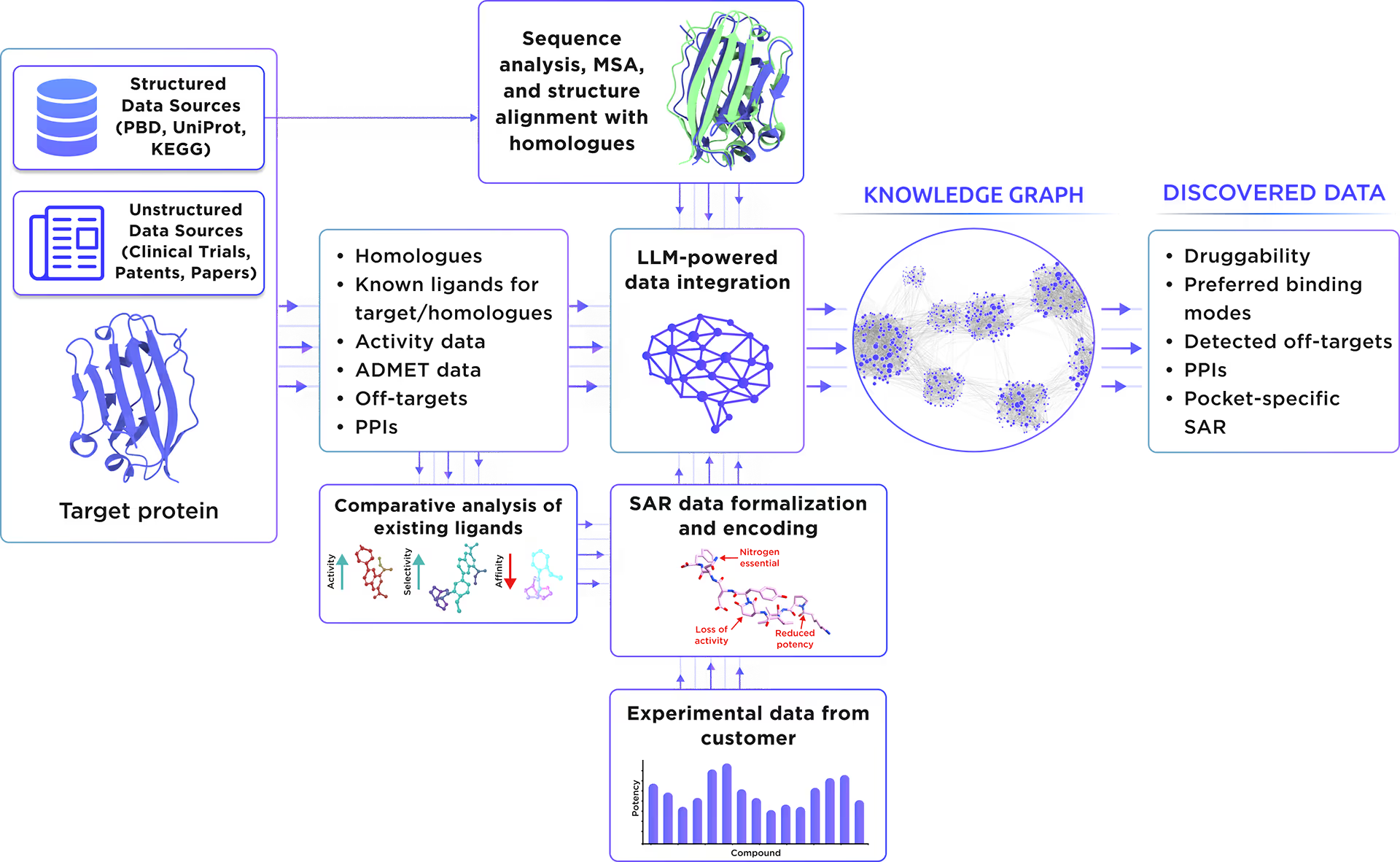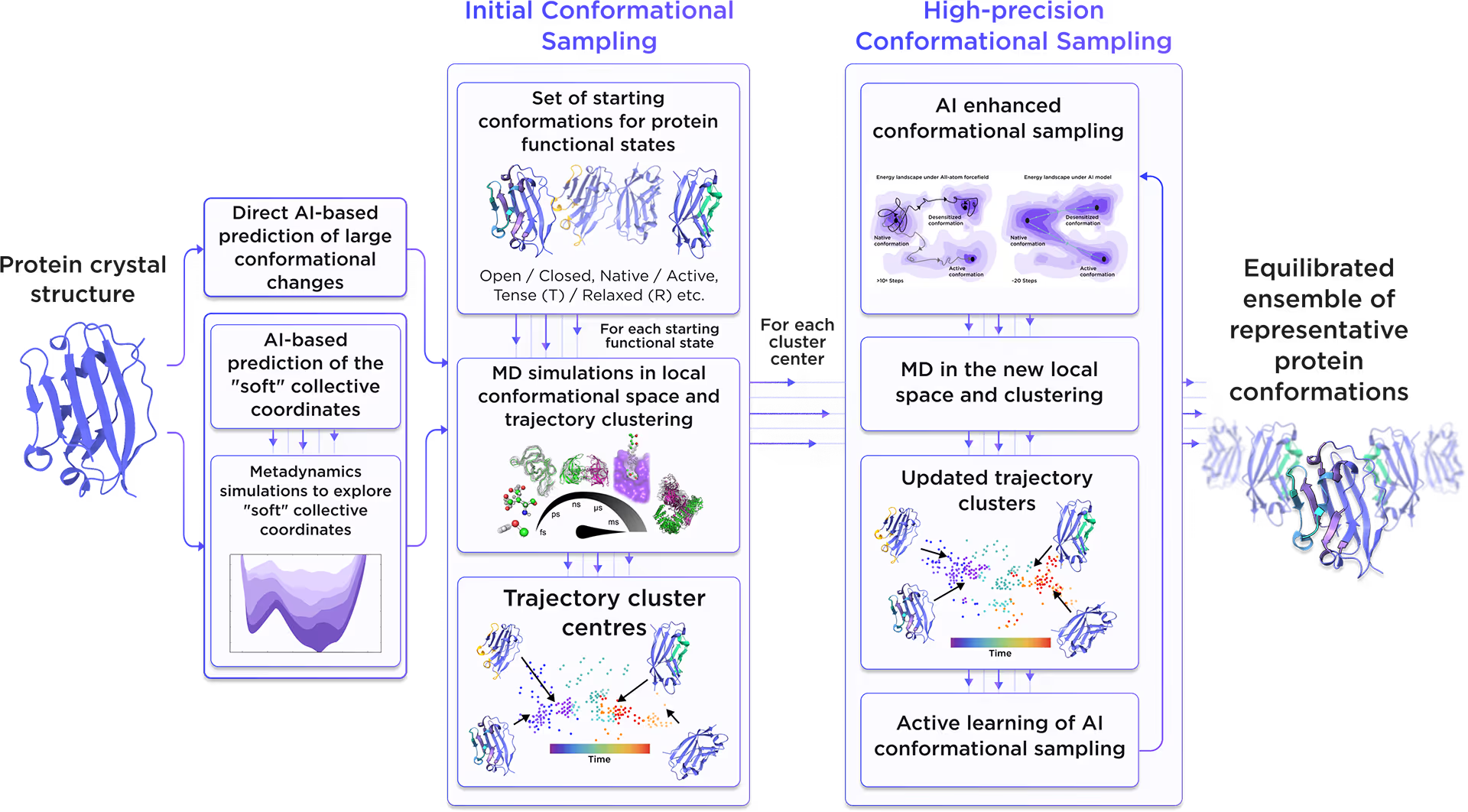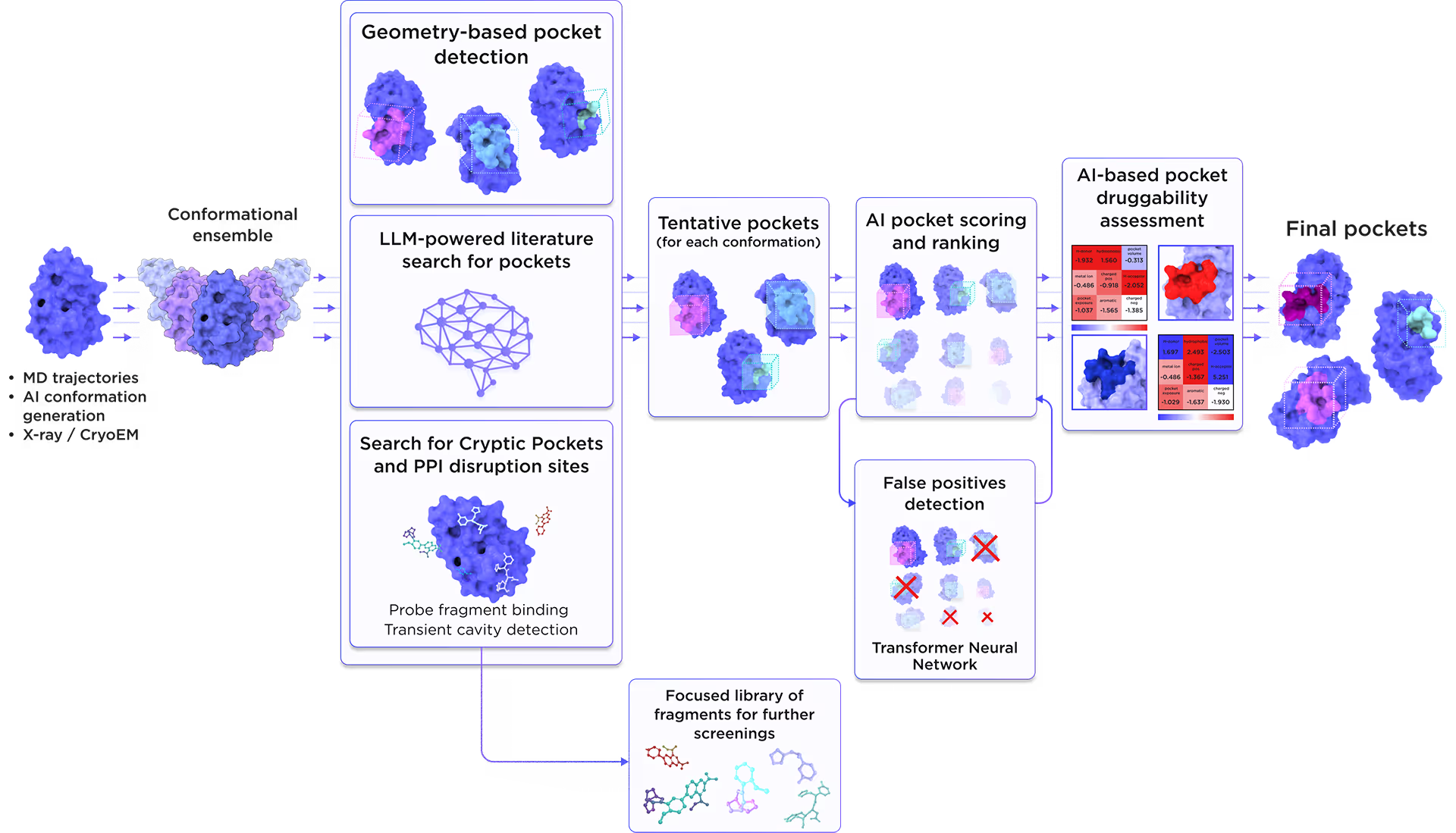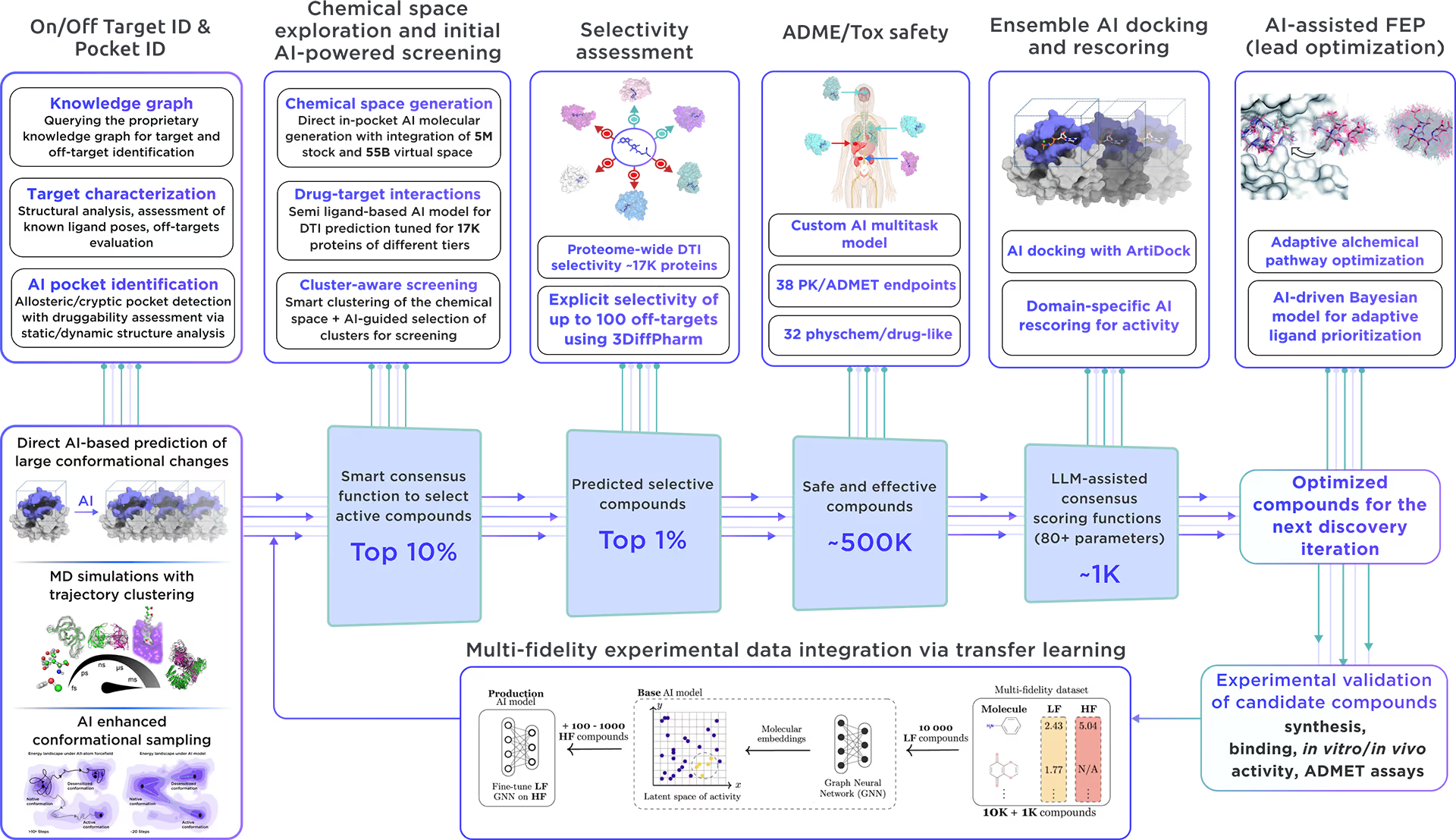

Available from Reaxense
This protein is integrated into the Receptor.AI ecosystem as a prospective target with high therapeutic potential. We performed a comprehensive characterization of BOS complex subunit TMEM147 including:
1. LLM-powered literature research
Our custom-tailored LLM extracted and formalized all relevant information about the protein from a large set of structured and unstructured data sources and stored it in the form of a Knowledge Graph. This comprehensive analysis allowed us to gain insight into BOS complex subunit TMEM147 therapeutic significance, existing small molecule ligands, relevant off-targets, and protein-protein interactions.

Fig. 1. Preliminary target research workflow
2. AI-Driven Conformational Ensemble Generation
Starting from the initial protein structure, we employed advanced AI algorithms to predict alternative functional states of BOS complex subunit TMEM147, including large-scale conformational changes along "soft" collective coordinates. Through molecular simulations with AI-enhanced sampling and trajectory clustering, we explored the broad conformational space of the protein and identified its representative structures. Utilizing diffusion-based AI models and active learning AutoML, we generated a statistically robust ensemble of equilibrium protein conformations that capture the receptor's full dynamic behavior, providing a robust foundation for accurate structure-based drug design.

Fig. 2. AI-powered molecular dynamics simulations workflow
3. Binding pockets identification and characterization
We employed the AI-based pocket prediction module to discover orthosteric, allosteric, hidden, and cryptic binding pockets on the protein’s surface. Our technique integrates the LLM-driven literature search and structure-aware ensemble-based pocket detection algorithm that utilizes previously established protein dynamics. Tentative pockets are then subject to AI scoring and ranking with simultaneous detection of false positives. In the final step, the AI model assesses the druggability of each pocket enabling a comprehensive selection of the most promising pockets for further targeting.

Fig. 3. AI-based binding pocket detection workflow
4. AI-Powered Virtual Screening
Our ecosystem is equipped to perform AI-driven virtual screening on BOS complex subunit TMEM147. With access to a vast chemical space and cutting-edge AI docking algorithms, we can rapidly and reliably predict the most promising, novel, diverse, potent, and safe small molecule ligands of BOS complex subunit TMEM147. This approach allows us to achieve an excellent hit rate and to identify compounds ready for advanced lead discovery and optimization.

Fig. 4. The screening workflow of Receptor.AI
Receptor.AI, in partnership with Reaxense, developed a next-generation technology for on-demand focused library design to enable extensive target exploration.
The focused library for BOS complex subunit TMEM147 includes a list of the most effective modulators, each annotated with 38 ADME-Tox and 32 physicochemical and drug-likeness parameters. Furthermore, each compound is shown with its optimal docking poses, affinity scores, and activity scores, offering a detailed summary.
BOS complex subunit TMEM147
partner:
Reaxense
upacc:
Q9BVK8
UPID:
TM147_HUMAN
Alternative names:
Protein NIFIE 14; Transmembrane protein 147
Alternative UPACC:
Q9BVK8; A8MWW0; O75790
Background:
BOS complex subunit TMEM147, also known as Protein NIFIE 14 and Transmembrane protein 147, plays a crucial role in the insertion of multi-pass membrane proteins into lipid bilayers. It functions as part of the multi-pass translocon (MPT) complex, facilitating the insertion process post the SEC61 complex's initial engagement. Additionally, TMEM147 negatively regulates CHRM3 function and calcium mobilization, impacting RPS6KA1/p90RSK activity and influencing LBR localization to the nucleus inner membrane.
Therapeutic significance:
Understanding the role of BOS complex subunit TMEM147 could open doors to potential therapeutic strategies, particularly in addressing Neurodevelopmental disorder with facial dysmorphism, absent language, and pseudo-Pelger-Huet anomaly, a condition directly linked to variants affecting this gene.